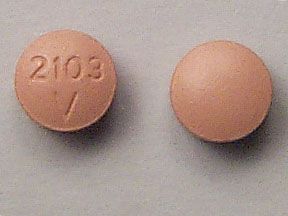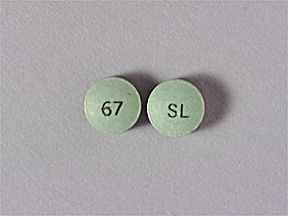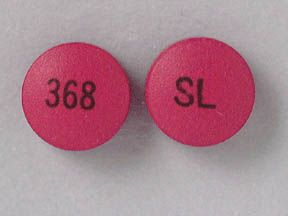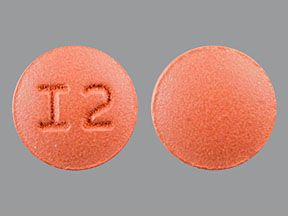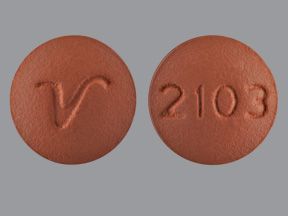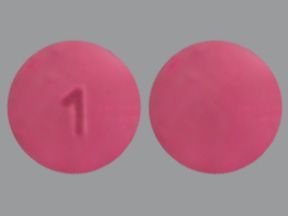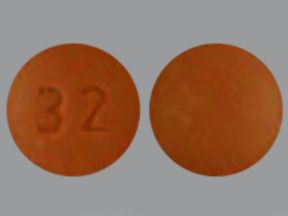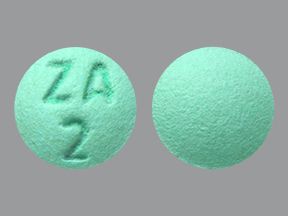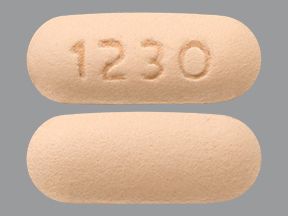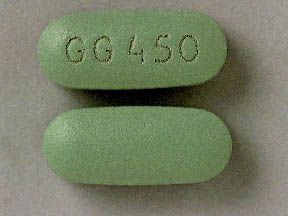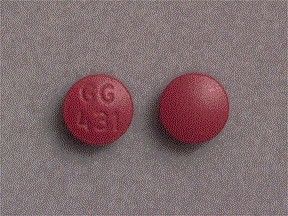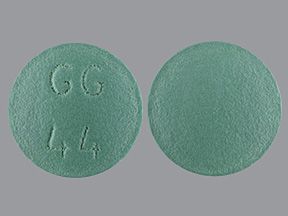Key Takeaways
- Amitriptyline oral tablets are approved to treat depression in adults and some children. They may also be prescribed off-label for other conditions like pain, migraine, and insomnia.
- This drug has a boxed warning about an increased risk of suicidal thoughts or behaviors in children and young adults. Other side effects can include numbness or tingling, anxiety, and weight changes.
- Amitriptyline is a tricyclic antidepressant that works by increasing the levels of chemicals in your brain called norepinephrine and serotonin.
Amitriptyline oral tablet is a prescription drug used to help relieve symptoms of major depressive disorder (MDD) in adults and children 12 years and older. It’s also referred to as amitriptyline hydrochloride.
To learn more about MDD and how amitriptyline is used to treat it, see the “What is amitriptyline oral tablet used for?” section.
Amitriptyline oral tablet brand-name versions
Amitriptyline is a generic drug, and it’s not currently available in brand-name form. The brand-name medication that amitriptyline tablets are based on was called Elavil. But brand-name Elavil is no longer available.
A generic drug is an exact copy of the active ingredient in a brand-name medication. Generics are thought to be as safe and effective as the brand-name drug they’re based on. In general, generics usually cost less than brand-name drugs.
Amitriptyline has a boxed warning. A boxed warning is the most serious warning from the Food and Drug Administration (FDA). For more information, see the “What should be considered before taking amitriptyline oral tablet?” section.
Optum Perks is owned by RVO Health. By clicking on this link, we may receive a commission. Learn more.
Like most drugs, amitriptyline oral tablets may cause mild or serious side effects. The following lists describe some of the side effects that amitriptyline may cause. These lists don’t include all possible side effects.
Keep in mind that side effects of a drug can depend on:
- your age
- other health conditions you have
- other medications you may be taking
Your doctor or pharmacist can tell you more about the potential side effects of amitriptyline. They can also suggest ways to help reduce side effects.
Mild side effects
Here’s a list of some of the mild side effects that amitriptyline can cause. To learn about other mild side effects, talk with your doctor or pharmacist, or read amitriptyline oral tablet’s prescribing information.
Mild side effects of amitriptyline oral tablet that have been reported include:
- blurry vision
- confusion
- constipation
- headache
- numbness and tingling (also called a “pins and needles” feeling) in your arms, feet, hands, or legs
- diarrhea
- dizziness
- drowsiness
- dry mouth
- nausea
- rash
- weight gain or weight loss (see “Side effect focus” for details)
Mild side effects of many drugs may go away within a few days or a couple of weeks. But if they become bothersome, talk with your doctor or pharmacist.
Serious side effects
Serious side effects from amitriptyline oral tablets can occur, but they aren’t common. If you have serious side effects from taking this drug, call your doctor right away. However, if you think you’re having a medical emergency, you should call 911 or your local emergency number.
Serious side effects of amitriptyline oral tablets that have been reported include:
- heart problems, such as:
- increases or decreases in blood sugar
- orthostatic hypotension (sudden drop in blood pressure when standing)
- seizures
- swelling in your face or tongue
- stroke
- withdrawal symptoms (if you suddenly stop taking the drug)
- boxed warning: increased risk of suicidal thoughts and behaviors in certain people*
- changes in your mood or behaviors
- allergic reaction
For more information about some of these side effects, see the “Side effect focus” section.
* For details, see the “What should be considered before taking amitriptyline oral tablet?” section.
Side effect focus
Learn more about some of the side effects amitriptyline oral tablets may cause.
Weight gain and weight loss
You may have weight gain or weight loss while you’re taking amitriptyline oral tablets. Weight changes were a side effect in studies of the drug.
Keep in mind that weight changes are common in depression, which amitriptyline treats. So you may have weight gain or weight loss while you’re taking amitriptyline because your depression is getting better. Weight changes may not be caused by the drug itself.
What might help
If you’re concerned about weight gain or weight loss while taking amitriptyline, talk with your doctor. They can suggest ways to maintain a weight that’s healthy for you.
Changes in your mood or behaviors
You may have changes in your mood or behaviors while you’re taking amitriptyline oral tablets. This side effect wasn’t common in studies of the drug. But drugs used to treat depression, such as amitriptyline, may cause mood or behavior changes.
Mood or behavior changes from amitriptyline can include:
- feeling aggressive, violent, or irritable
- anxiety
- worsening depression
- mania or hypomania (moments of extremely high excitement and energy)
Mood or behavior changes can also be a symptom of suicidal thoughts and behaviors. Amitriptyline has a boxed warning for this side effect. For more information, see the “What should be considered before taking amitriptyline oral tablet?” section.
What might help
Tell your doctor about any changes in mood or behavior you experience while taking amitriptyline. They may recommend evaluating you for bipolar disorder. People with bipolar disorder have extreme mood changes, usually alternating between episodes of mania and depression.
If you have mood or behavior changes, your doctor will help decide whether amitriptyline is right for treating your condition.
Allergic reactionFor some people, amitriptyline can cause an allergic reaction. In general, symptoms of allergic reaction can be mild or serious.
What might help
If you have mild symptoms of an allergic reaction, such as a mild rash, call your doctor right away. They may suggest a treatment to manage your symptoms and can determine whether you should keep taking amitriptyline.
If you have symptoms of a severe allergic reaction, such as swelling or trouble breathing, call 911 or your local emergency number right away. These symptoms could be life threatening and require immediate medical care.
If your doctor confirms you’ve had a serious allergic reaction to amitriptyline, they may have you switch to a different treatment.
Amitriptyline is approved to help relieve symptoms of major depressive disorder (MDD) (also called depression) in adults and children ages 12 years and older.
MDD refers to symptoms of depression that happen almost every day for at least 2 weeks. These symptoms can include:
- loss of interest in activities you used to enjoy
- changes in weight or appetite
- feeling angry, hopeless, or irritable
Amitriptyline belongs to a group of drugs called tricyclic antidepressants. It works by increasing the levels of chemicals in your brain called norepinephrine and serotonin. Higher levels of these chemicals help improve your mood and lessen the symptoms of depression.
Note: Amitriptyline may also be prescribed off-label for some uses (see “What are some frequently asked questions about amitriptyline oral tablet?” for details).
Find answers to some commonly asked questions about amitriptyline oral tablet.
Is amitriptyline used to treat pain or help with sleep? If so, what are the dosages for pain and sleep?
Amitriptyline is not approved to treat pain or help with sleep. But it may be prescribed off-label for these purposes. (Off-label means prescribing a drug for a condition it hasn’t been approved to treat.)
Amitriptyline is sometimes prescribed off-label to treat certain painful conditions, such as:
- bladder pain
- diabetic neuropathy (nerve pain caused by high levels of blood sugar over a long period of time)
- fibromyalgia (musculoskeletal pain that happens along with tiredness and trouble with memory, mood, and sleep)
- headache from a brain injury
Amitriptyline may also be prescribed off-label to treat insomnia (trouble falling or staying asleep).
If you’re interested in amitriptyline for an off-label use, be sure to talk with your doctor.
Does amitriptyline treat headaches, such as those caused by migraine?
Amitriptyline isn’t typically used to treat headaches. However, amitriptyline may be prescribed off-label to help prevent migraine.
Migraine is a condition that can cause severe headache along with other symptoms. These can include:
- nausea and vomiting
- sensitivity to light or sound
- trouble speaking
- auras (problems with your vision, speech, or senses that can happen before or after a migraine attack)
To learn more about using amitriptyline to help prevent migraine, talk with your doctor.
How does amitriptyline work? What’s its half-life and how long does it stay in your system?
Amitriptyline belongs to a group of drugs called tricyclic antidepressants.
Amitriptyline works by increasing the levels of chemicals in your brain called norepinephrine and serotonin. Higher levels of these chemicals help improve your mood and lessen the symptoms of depression. This is the drug’s mechanism of action.
Amitriptyline stays in your system for about 2 to 6 days after your last dose. This is based on the drug’s half-life, which is the time it takes for your body to get rid of half of the drug. (The half-life of amitriptyline is between 10 and 28 hours. So it takes between 10 and 28 hours for half of an amitriptyline dose to leave your body. And typically it takes about five half-lives for a drug to leave your system.)
Is amitriptyline used for anxiety or IBS?
Amitriptyline is not approved to treat anxiety or irritable bowel syndrome (IBS). But the drug may be prescribed off-label to treat these conditions.
With anxiety, you may feel fear, uneasiness, or worry about everyday situations.
IBS is a condition that affects the digestive system. Its symptoms include:
- abdominal pain
- bloating
- constipation
- cramping
- diarrhea
- flatulence (gas)
To learn more about using amitriptyline to treat anxiety or IBS, talk with your doctor.
What should I know about amitriptyline vs. nortriptyline?
Both amitriptyline and nortriptyline belong to a group of drugs called tricyclic antidepressants.
Amitriptyline and nortriptyline are very similar. In fact, amitriptyline breaks down into nortriptyline in your body. Both drugs are used to treat depression.
To learn more about how amitriptyline and nortriptyline are alike and different, talk with your doctor or pharmacist.
Is amitriptyline a narcotic? And is it addictive?
Amitriptyline isn’t a narcotic. It belongs to a group of drugs called tricyclic antidepressants.
Narcotics, on the other hand, are opioid drugs. “Narcotic” is a term used to describe illegal opioids, such as heroin. It’s also used to describe prescription opioids. Examples include oxycodone (Oxaydo, Roxicodone) and fentanyl (Actiq, Duragesic).
Amitriptyline has not been shown to be addictive. (With addiction, a person wants to take a drug even if it’s causing them harm.)
This section describes commonly used dosages, but always take the dosage your doctor prescribes.
Form and strengths
Amitriptyline comes as an oral tablet that you’ll swallow. The tablets are available in the following strengths:
- 10 milligrams (mg)
- 25 mg
- 50 mg
- 75 mg
- 100 mg
- 150 mg
Recommended dosage
The recommended amitriptyline dosage for depression in adults is 75 mg per day, usually divided into multiple doses. You’ll start with a small dose, and your doctor will gradually increase your dose as needed.
Your exact dose may depend on how well the drug works for your condition, any side effects you have, your age, and other factors. Eventually, you may take amitriptyline only once each day.
In some cases, your doctor may have you start with a dose of 50 to 100 mg at bedtime. This dose may be increased by 25 or 50 mg as needed, up to a total of 150 mg per day.
Amitriptyline’s maximum dosage is 150 mg per day.
Dosage for adolescents and older adults
For adolescents and older adults (usually 65 years or older), doctors may prescribe the following lower dosage of amitriptyline: 10 mg taken three times per day, and 20 mg taken at bedtime, for a total of 50 mg per day.
How to take
You should swallow amitriptyline tablets. Your doctor will explain how much to take and how often. Be sure to follow their instructions.
Questions about taking amitriptyline oral tablet
- What if I miss a dose of amitriptyline oral tablets? Take your missed dose as soon as you remember. If it’s almost time to take your next dose, you can skip your missed dose. Then you’ll take your next amitriptyline dose at its regular time. You should not take any extra doses of amitriptyline to make up for a missed dose. Doing so can raise your risk for side effects from the drug. If you aren’t sure whether to skip a dose or take it, talk with your doctor or pharmacist.
- Will I need to take amitriptyline oral tablets long term? Yes, you may take amitriptyline long term if you aren’t having bothersome side effects and the drug is working for you. You and your doctor will determine the right length of time for you to take the drug.
- Can amitriptyline oral tablets be chewed, crushed, or split? The manufacturer of amitriptyline hasn’t stated whether the tablet can be chewed, crushed, or split. If you have trouble swallowing amitriptyline tablets whole, talk with your doctor or pharmacist.
- Should I take amitriptyline oral tablets with food? You can take amitriptyline with or without food.
- How long do amitriptyline oral tablets take to work? After you start using amitriptyline, it may take up to 1 month for your depression symptoms to ease. Talk with your doctor about what to expect with amitriptyline treatment.
Overdose
Do not take more amitriptyline than your doctor prescribes. Taking more than this can lead to serious side effects. If you have serious side effects from an amitriptyline overdose, you may need overdose treatment.
Symptoms of overdose
Severe symptoms caused by an overdose can include:
- abnormal heart rhythm
- convulsions (stiff muscles or uncontrolled muscle movements)
- severely low blood pressure
- central nervous system depression that can lead to coma
What to do in case you take too much amitriptyline
Call your doctor if you think you’ve taken too much amitriptyline. You can also call 800-222-1222 to reach America’s Poison Centers, or use its online resource. But if you have severe symptoms, immediately call 911 (or your local emergency number) or go to the nearest emergency room.
This section contains important information to consider before starting amitriptyline treatment.
Interactions
Taking medications, vaccines, foods, and other things with a certain drug can affect how the drug works. These effects are called interactions.
Amitriptyline oral tablets can interact with several types of drugs. These drugs include:
- thyroid hormone drugs
- certain antidepressant drugs, such as:
- selective serotonin reuptake inhibitors (SSRIs) such as fluoxetine (Prozac) and paroxetine (Paxil, Paxil CR)
- monoamine oxidase inhibitors (MAOIs) such as isocarboxazid, phenelzine (Nardil), and selegiline (Emsam, Zelapar)
- drugs that decrease the activity of your central nervous system, such as barbiturates
- drugs broken down in your body by an enzyme called CYP2D6, such as quinidine and mirabegron (Mybetriq)
- cimetidine (Tagamet HB)
- topiramate (Topamax, Trokendi XR)
This list does not contain all types of drugs that may interact with amitriptyline.
Before taking amitriptyline, be sure to tell your doctor about all medications you take, including prescription and over-the-counter types. Also describe any vitamins, herbs, or supplements you use. Your doctor or pharmacist can tell you about any interactions these items may cause with amitriptyline.
Boxed warning
Amitriptyline tablets have a boxed warning. This is a serious warning from the Food and Drug Administration (FDA) about drug effects that may be dangerous.
Suicidal behaviors and thoughts. Drugs used to treat depression can raise the risk of suicidal thoughts and behaviors in children and young adults. This includes amitriptyline.
You have a higher risk for this side effect if you:
- recently started taking the drug
- recently had a dosage change
- are 24 years of age or younger (note: amitriptyline is not used to treat depression in children younger than 12 years of age)
While taking amitriptyline, watch for these symptoms:
- feeling more agitated, aggressive, irritable, or restless than usual
- anxiety
- panic attacks
- insomnia (trouble falling or staying asleep)
- impulsive behavior
- thoughts of harming yourself
- worsening depression
Tell your doctor right away if you have any of the above symptoms while taking amitriptyline. They may adjust your treatment plan as a result. Or they may prescribe a drug other than amitriptyline for your condition.
Help is out there
If you or someone you know is in crisis and considering suicide or self-harm, please seek support:
- Call or text the 988 Suicide and Crisis Lifeline at 988 or chat at 988lifeline.org. Caring counselors are available to listen and provide free and confidential support 24/7.
- Text HOME to the Crisis Text Line at 741741 to connect with a volunteer crisis counselor for free and confidential support 24/7.
- Not in the United States? Find a helpline in your country with Befrienders Worldwide.
- Call 911 or your local emergency services number if you feel safe to do so.
If you’re calling on behalf of someone else, stay with them until help arrives. You may remove weapons or substances that can cause harm if you can do so safely.
If you’re not in the same household, stay on the phone with them until help arrives.
Other warnings
Amitriptyline may not be right for you if you have certain medical conditions or other factors that affect your health. Factors that keep you from taking a drug are sometimes called contraindications.
Talk with your doctor about your health history before you take amitriptyline. Factors to consider include:
- bipolar disorder.
- eye problems, such as glaucoma
- history of heart problems
- liver problems
- schizophrenia
- seizures
- urinary retention (problems emptying your bladder completely)
- history of allergic reaction to amitriptyline or any of its ingredients
- taking monoamine oxidase inhibitors (MAOIs), which are a group of drugs used to treat depression
- any upcoming surgeries
- pregnancy or breastfeeding
- alcohol consumption (see the following section for details)
Use with alcohol
You should not drink alcohol while taking amitriptyline. You may have a higher risk of overdose with amitriptyline if you drink alcohol while taking the drug.
Before taking amitriptyline, tell your doctor if you take disulfiram (Antabuse) to treat alcohol use disorder. Taking amitriptyline with this drug can cause delirium. (Delirium is a condition that causes problems with thinking, remembering, and paying attention.)
If you have questions about drinking alcohol while taking amitriptyline, talk with your doctor.
Costs of prescription drugs can vary depending on many factors. These factors include what your insurance plan covers and which pharmacy you use.
Here are a few things to consider regarding amitriptyline’s cost:
- Cost information and savings coupons: You can visit Optum Perks to get price estimates of what you’d pay for amitriptyline when using coupons from the site. See the coupon options below. (Note: Optum Perks coupons cannot be used with any insurance copays or benefits.)
- Savings programs: Financial assistance to help you pay for amitriptyline oral tablets may be available. Medicine Assistance Tool and NeedyMeds are two websites that provide resources to help reduce the cost of drugs such as amitriptyline.
Learn more about saving on your prescriptions.
Disclaimer: Healthline has made every effort to make certain that all information is factually correct, comprehensive, and up to date. However, this article should not be used as a substitute for the knowledge and expertise of a licensed healthcare professional. You should always consult your doctor or another healthcare professional before taking any medication. The drug information contained herein is subject to change and is not intended to cover all possible uses, directions, precautions, warnings, drug interactions, allergic reactions, or adverse effects. The absence of warnings or other information for a given drug does not indicate that the drug or drug combination is safe, effective, or appropriate for all patients or all specific uses.







